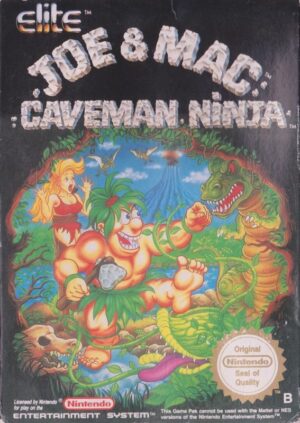Retro Replay Review
Gameplay
Taboo: The Sixth Sense turns the Nintendo Entertainment System into an unexpected divination tool. At its core, the game asks you to enter a question using the controller’s directional pad and buttons—whether you’re curious about love, career, or just life in general. Once your query is logged, the game shuffles its 22 “tarot” cards with simple animations and sound effects, then reveals them one by one in a sequence reminiscent of a traditional tarot reading.
The interactive element of writing your own question on-screen creates a surprisingly personal connection. While the process is straightforward—select letters, confirm your question, and wait for the cards—there’s a playful tension as the deck is “shuffled,” complete with low-fi chimes that heighten anticipation. The randomness of the fortune adds to the thrill, and each session can feel fresh even after multiple replays.
Notably, you have the choice to pick “lucky numbers” after the final card is revealed, a feature that adds a light-hearted lottery twist. These numbers might prompt players to jot down their selections for real-world use, further blurring the line between game and novelty fortune-teller. Of course, Taboo: The Sixth Sense is purely for entertainment, but the mechanics are polished enough that you’ll find yourself returning to it for fun at parties or late-night gatherings.
While the game doesn’t offer branching pathways or varied endings, its simple structure is part of its charm. There’s a satisfying sense of unpredictability each time you consult the cards, and the interface—though limited by NES hardware—runs smoothly with no noticeable lag. For collectors or anyone seeking a quirky diversion, the gameplay loop is engaging in its ritualistic simplicity.
Graphics
Graphically, Taboo: The Sixth Sense embraces the NES’s 8-bit limitations, presenting a stark yet evocative tarot deck on-screen. The background remains mostly black, allowing the cards’ line-art designs and color accents to pop. Each card features a clear icon and a bold title, making it easy to recognize suits like the Fool, the Lovers, or Death despite the hardware constraints.
Character animations are minimal but effective: a flickering shuffle effect and a simple card-flip animation keep the eye engaged without overwhelming the senses. The color palette is restrained—mostly shades of gray, red, and blue—but this muted aesthetic reinforces the game’s mystical atmosphere rather than detracting from it. It’s a fine example of how clever design can overcome technical limitations.
Menus and text input screens maintain consistent styling, with crisp font rendering and intuitive layout. The question-entry interface uses a grid of letters akin to an on-screen keyboard, which may feel a bit clunky compared to modern standards but was surprisingly responsive for its era. Overall, the graphics serve their purpose: to conjure a sense of occult ritual without unnecessary frills.
When compared to other NES titles of the time, Taboo stands out for its minimalist design rather than flashy sprites or parallax backgrounds. It doesn’t push the console’s graphical boundaries, but it doesn’t need to. Every visual element—cards, menus, and shuffling effects—works together to maintain the game’s thematic focus on fortune-telling and mysticism.
Story
Unlike traditional NES games, Taboo: The Sixth Sense doesn’t weave a narrative with protagonists, villains, or elaborate plot twists. Instead, its “story” unfolds through the tarot readings themselves. Each session feels like its own mini-narrative, with the cards offering glimpses of potential futures, warnings, or affirmations that you interpret personally.
This open-ended approach invites players to become the author of their own destiny, using the game as a storytelling tool. A reading about wealth and fame might inspire a mental vision quest, while a cautionary card could prompt reflection on real-life decisions. In essence, the game’s narrative is co-created by the player’s imagination and the random draw of cards.
Though there’s no overarching plot, the ritualistic process—question entry, card shuffle, reading, lucky-number selection—serves as a structured story framework. The game’s text responses are concise but evocative, offering enough flavor to spark curiosity without overwhelming the player with verbose exposition.
For those seeking a more traditional storyline, Taboo might feel sparse. However, if you appreciate abstract, player-driven storytelling or are intrigued by the mysticism of tarot, the game’s narrative style can feel surprisingly rich. Your own interpretations and anecdotes become part of the experience, making every reading a unique chapter in your personal tale.
Overall Experience
Taboo: The Sixth Sense occupies a unique niche in the NES library as a novelty title that doubles as an interactive party trick. It doesn’t compete with action-adventure or platforming giants of the era, but it delivers an experience few other games can offer: a digital tarot reading. Whether you’re playing solo or with friends, it generates conversation and laughter as you compare fortunes.
The user interface is straightforward, the pacing deliberate, and the presentation thematically consistent. There are no difficult controls or steep learning curves—once you understand how to input your question, the rest of the game unfolds organically. This accessibility makes it ideal for casual gamers, collectors, or anyone curious about a bit of mystical flair on their NES.
Taboo’s charm lies in its simplicity and novelty. It’s not a game you’ll spend hundreds of hours mastering, nor is it meant to be. Instead, it’s a quirky diversion that adds flavor to game nights and invites you to momentarily suspend disbelief. For players open to a lighthearted take on fortune-telling, it remains an engaging curiosity.
In the end, Taboo: The Sixth Sense is best viewed as a playful amusement—a digital deck of tarot cards that fits snugly into your cartridge collection. It offers a brief escape into the world of divination with just enough interactivity and atmosphere to keep you entertained, making it a memorable oddity in the NES lineup.
 Retro Replay Retro Replay gaming reviews, news, emulation, geek stuff and more!
Retro Replay Retro Replay gaming reviews, news, emulation, geek stuff and more!









Reviews
There are no reviews yet.